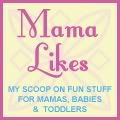 *I want to get the word out as soon as possible about this important study but I have limited time to write something original today, so I have lifted most of this post directly from media releases about the study*
*I want to get the word out as soon as possible about this important study but I have limited time to write something original today, so I have lifted most of this post directly from media releases about the study*Today, I participated in a media teleconference announcing the results of a new U.S. and Canadian study, "Baby's Toxic Bottle: Bisphenol A Leaching from Popular Baby Bottles". The results of this study have led dozens of U.S. and Canadian environmental health organizations to
call for an immediate moratorium on the use of bisphenol A (BPA) in baby bottles and other food and beverage containers.Researchers have found that the toxic chemical BPA leaches from popular plastic baby bottles when heated, including Avent, Evenflo, Dr. Brown’s and Disney/First Years. Importantly, ninety-five percent of all baby bottles on the market are made with BPA.
BPA, a synthetic sex hormone that mimics estrogen, is used to make hard polycarbonate plastic. Studies conducted on laboratory animals and cell cultures have linked low doses of BPA to obesity, diabetes, thyroid disease, breast cancer, prostate cancer and other illnesses. BPA exposure is widespread and has been found in 95% of Americans tested.
BPA is also found in some toddler sippy cups, polycarbonate water bottles such as some Nalgene bottles, dental sealants, and the linings of many food and beverage cans, including all infant formulas.
A couple of additional points I would like to share from the call are:--BPA is also commonly found in tap water sources. In fact, the researchers of this study had a hard time finding a non-contaminated water source for the study.
--A few of the questions from reporters from the media tended to focus on whether this study was really that significant since the dangers of BPA have only been confirmed in animals. The researcher made it clear that levels of BPA they found leaching from bottles was surprisingly high and within the range to which animals respond with adverse effects. And furthermore, noting the adverse affects of BPA in animals IS a significant sign of BPA's probable risk to humans.
--The most dangerous period for BPA exposure is before birth (in the womb) and during infancy and early childhood when human body systems are still being developed and can be adversely affected by hormone disrupters. Both males AND females can be adversely affected by BPA exposure. In animal studies, some males that were exposed had abnormalities of reproduction when they grew up. Females saw changes in breast tissue that can lead to breast cancer later in life. These are only two examples of the types of health problems BPA can cause.
So with all of this information, I personally am going to:1) Use only glass bottles with safe plastic nipples for my 6-month-old son. I go back to work next week and will be pumping breastmilk every day for him. I have found a safe brand of bottles and nipples that I like and which I will be featuring on
Green Mom Finds soon, as well as offering some to give away I hope! In the meantime, if you want me to send you a link to their site, drop me an email.
2) Stop buying canned foods. It will be hard, but I'm not taking any more chances.
3) Continue using safe sippy cups for Little Guy. There are tons safer options out there now. Safemama.com has a great cheat sheet on her site. We've also featured a couple on
Green Mom Finds.Here is some more information, which I took directly from the press release:Parents can take action immediately to protect their children’s health by choosing safer products, including plastic baby bottles made without BPA or glass baby bottles. (See www.babystoxicbottle.org for more tips.)
Visitors to the “Baby’s Toxic Bottle” website can sign a petition to baby bottle manufacturers, urging them to phase out BPA in baby bottles at www.babystoxicbottle.org.
The full study, “Baby's Toxic Bottle: Bisphenol A Leaching from Popular Baby Bottles,” is available to download for free on the website www.babystoxicbottle.org. The Canadian version of the study is available at www.toxicnation.ca.
This study was commissioned by Environmental Defence of Canada in cooperation with The Work Group for Safe Markets in the U.S., and researched by the laboratory of Frederick vom Saal, PhD., at the University of Missouri. Study results were released today in the U.S. by a broad coalition of public health and environmental non-governmental organizations including: Alliance for a Clean and Healthy Maine, Alliance for a Healthy Tomorrow, Boston Common Asset Management, Breast Cancer Fund, Center for Health, Environment & Justice, Clean New York, Clean Water Action, Environment America, Environmental Health Fund, Healthy Legacy, Learning Disabilities Association of America, MOMS (Making Our Milk Safe), Oregon Environmental Council, Sierra Club, and US PIRG.
Note that, due to server problems, the babystoxicbottles.org site will be down for part of the day.




























